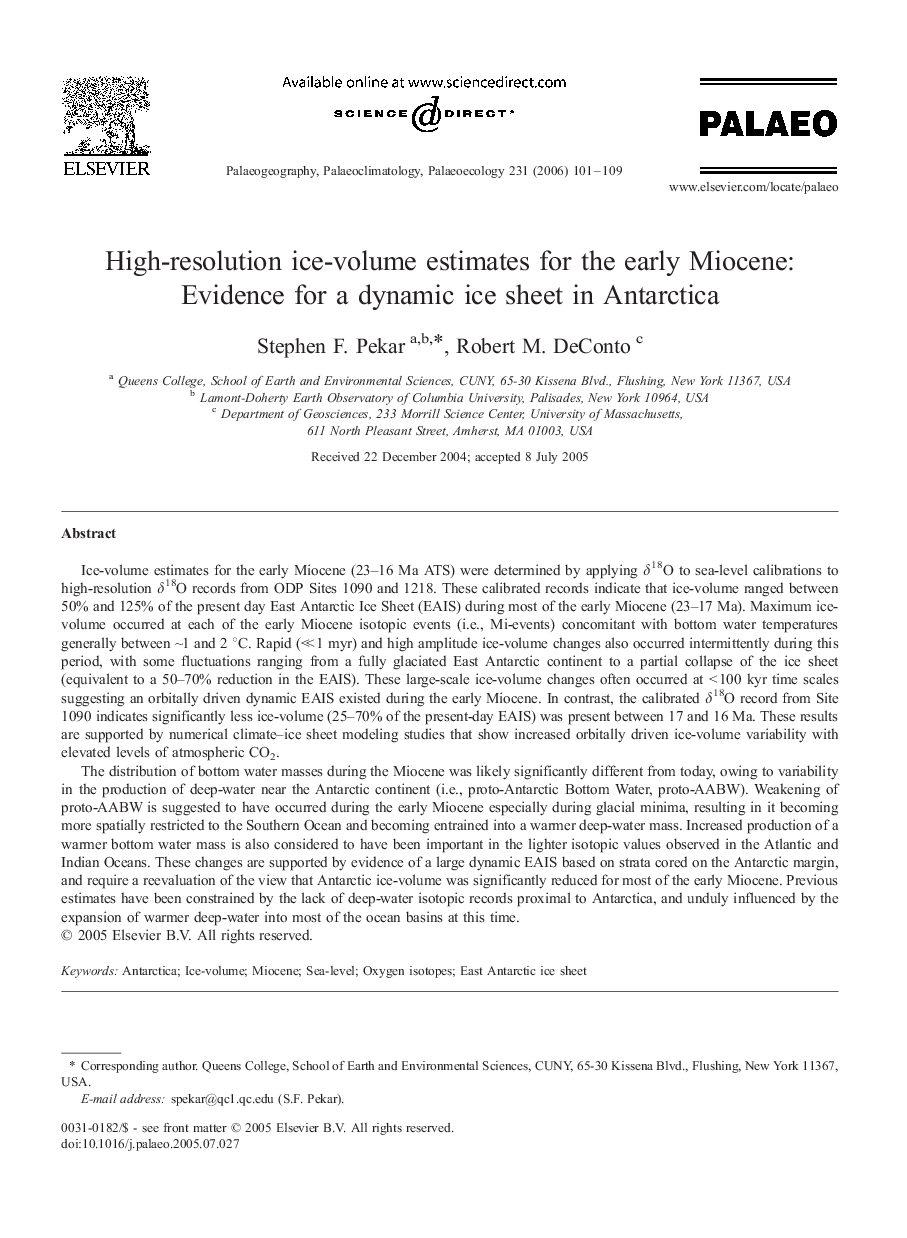| کد مقاله | کد نشریه | سال انتشار | مقاله انگلیسی | نسخه تمام متن |
|---|---|---|---|---|
| 4469582 | 1622379 | 2006 | 9 صفحه PDF | دانلود رایگان |

Ice-volume estimates for the early Miocene (23–16 Ma ATS) were determined by applying δ18O to sea-level calibrations to high-resolution δ18O records from ODP Sites 1090 and 1218. These calibrated records indicate that ice-volume ranged between 50% and 125% of the present day East Antarctic Ice Sheet (EAIS) during most of the early Miocene (23–17 Ma). Maximum ice-volume occurred at each of the early Miocene isotopic events (i.e., Mi-events) concomitant with bottom water temperatures generally between ∼1 and 2 °C. Rapid (≪ 1 myr) and high amplitude ice-volume changes also occurred intermittently during this period, with some fluctuations ranging from a fully glaciated East Antarctic continent to a partial collapse of the ice sheet (equivalent to a 50–70% reduction in the EAIS). These large-scale ice-volume changes often occurred at < 100 kyr time scales suggesting an orbitally driven dynamic EAIS existed during the early Miocene. In contrast, the calibrated δ18O record from Site 1090 indicates significantly less ice-volume (25–70% of the present-day EAIS) was present between 17 and 16 Ma. These results are supported by numerical climate–ice sheet modeling studies that show increased orbitally driven ice-volume variability with elevated levels of atmospheric CO2.The distribution of bottom water masses during the Miocene was likely significantly different from today, owing to variability in the production of deep-water near the Antarctic continent (i.e., proto-Antarctic Bottom Water, proto-AABW). Weakening of proto-AABW is suggested to have occurred during the early Miocene especially during glacial minima, resulting in it becoming more spatially restricted to the Southern Ocean and becoming entrained into a warmer deep-water mass. Increased production of a warmer bottom water mass is also considered to have been important in the lighter isotopic values observed in the Atlantic and Indian Oceans. These changes are supported by evidence of a large dynamic EAIS based on strata cored on the Antarctic margin, and require a reevaluation of the view that Antarctic ice-volume was significantly reduced for most of the early Miocene. Previous estimates have been constrained by the lack of deep-water isotopic records proximal to Antarctica, and unduly influenced by the expansion of warmer deep-water into most of the ocean basins at this time.
Journal: Palaeogeography, Palaeoclimatology, Palaeoecology - Volume 231, Issues 1–2, 9 February 2006, Pages 101–109